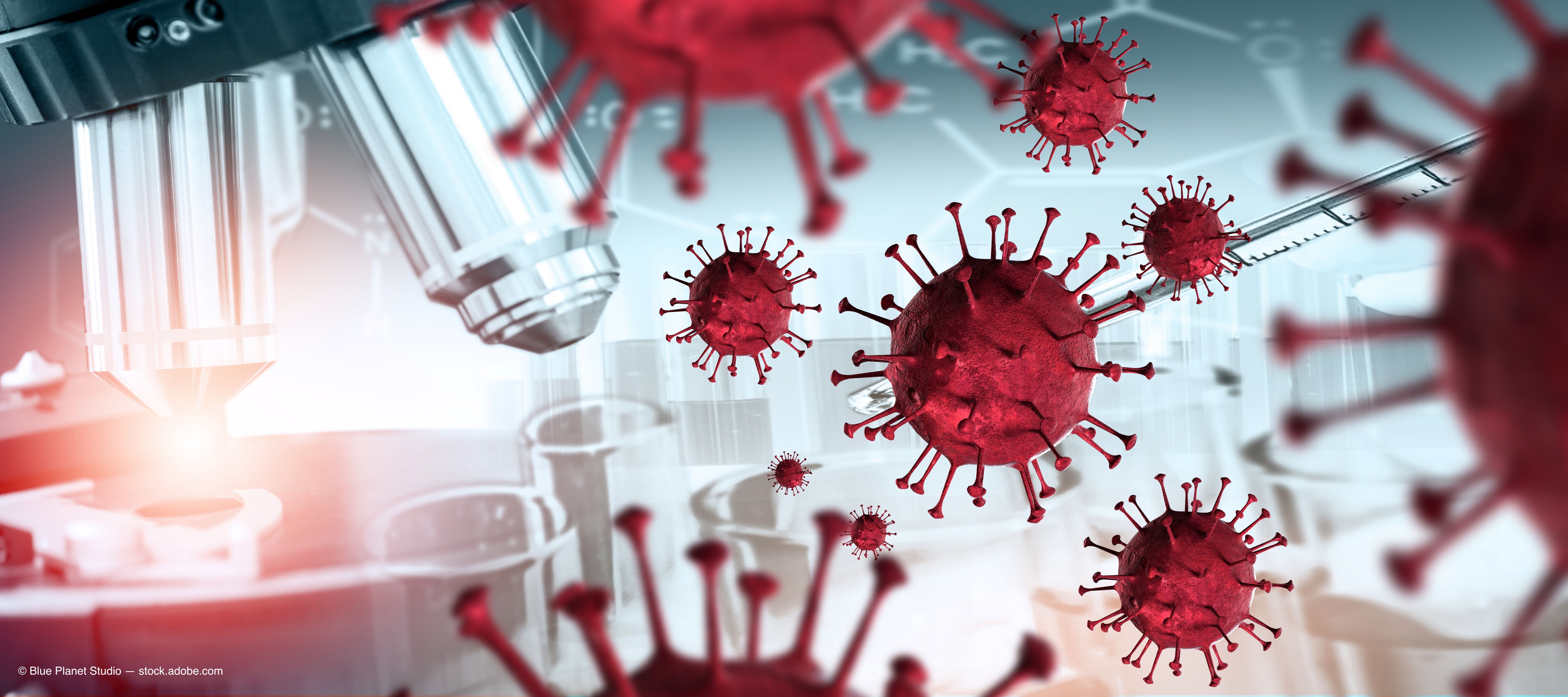Article
Researchers developing antiviral drug for COVID-19
Author(s):
Investigators with the Texas Tech University Health Sciences Center Department of Ophthalmology and Visual Sciences have filed a US patent for a novel peptide that uses selenium as a catalyst to target vulnerable areas of coronaviruses, including COVID-19.

Researchers at Texas Tech University are investigating a new drug that could offer hope to coronavirus disease 2019 (COVID-19) patients and change the way physicians treat viruses.
Ted Reid, PhD, a professor in the Texas Tech University Health Sciences Center (TTUHSC) Department of Ophthalmology and Visual Sciences specializing in selenium research, is leading a team that has filed a US patent for a novel peptide that uses selenium as a catalyst to target vulnerable areas of coronaviruses, including COVID-19. Peptides are short chains or sequences of amino acids that make up proteins.
In a recent report, the TTUHSC noted that the drug is in the early research phases. It uses a small dose of selenium, a common mineral that targets and inactivates the coronavirus.
Selenium also is found in flour and other foods. Investigators used a pseudo virus to test the reaction with selenium.
According to the TTUHSC report, Reid’s team of investigators at a peptide first characterized in China which had been studied by other groups, including investigators from the Massachusetts Institute of Technology (MIT).
The MIT scientists measured the binding of the peptide to the cap, or end of a spike protein, thus demonstrating its potential for blocking the virus’s ability to bind to a human cell. Though promising, Reid said the blocking process is complicated by several factors.
The Texas Tech researchers point out that the peptide must bind tightly to the spike protein cap to prevent the virus from binding to the human cell. It does not matter how tightly it binds.
The peptide will ultimately break away and leave the spike protein unblocked. A peptide must bind to all 160 spike proteins to ultimately prevent the virus from attaching to a human cell.
If any of the spike proteins remains unblocked, the virus retains its ability to invade a human cell.
“Even if you bind to 100 of them, you still have 60 left to bind to the human cell,” Reid said in the TTUHSCstatement. “Once the spike protein binds it is all over because they are not going to come off; they're going to fuse with the membrane and affect the cell. So just binding to this spike protein, that is good, but it is not the whole story.”
Rather than trying to block each spike protein, the TTUHSC report noted that Reid’s investigators attached selenium to the previously sequenced peptide to create a novel peptide that inactivates the virus.
Once their peptide nears the virus membrane, the selenium becomes the catalyst for a reaction that changes glutathione, a compound present in the bloodstream and most bodily fluids like saliva, tears and sweat.
In order to get the reaction, the Texas Tech investigators said the selenium takes the electron from glutathione and then donates it to oxygen to create what is known as a superoxide.
The superoxide then attacks, or oxidizes the virus cell membrane. With its membrane ruptured, the virus is inactivated and can no longer bind to human cells.
Like the peptide researched at MIT, Reid’s peptide also breaks away, but the damage to the virus is done.
Because the body continually produces glutathione, the peptide can move to another virus cell where the selenium-glutathione reaction is repeated.
As long as the selenium is attached, the peptide repeats the process over and over again.
The Texas Tech investigators also point out that the peptide does not need to bind tightly or for an extended period of time to create the reaction that inactivates the virus.
This is because it is armed with selenium. They point out that the peptide also can be targeted to bind at a very specific chain of amino acids on the virus’s spike protein where mutation does not occur.
According to Reid, his team is developing a drug that most likely would be delivered through an inhaler. In the statement, he said this would permit the drug to immediately enter blood vessels in the lungs, which are particularly susceptible to COVID-19 damage.
He noted that a single dose would include about 20 micrograms of selenium, and though some may be concerned about toxicity, the dose of selenium required for the drug to be effective pales in comparison to the amount humans ingest daily in ordinary food.
Reid cautioned that the drug is not a cure, but it could protect a patient diagnosed with COVID-19 until their body is able to develop antibodies against the coronavirus and defend itself. Investigators said this is a process that takes 7 to 14 days.
While most drugs currently available try to prevent the virus from replicating itself after it is contracted, Reid said the drug his team is developing would be a true antiviral drug.
According to Reid, the patient taking the drug would start their antibody production while the drug is killing off the virus that would cause them any harm.
“So at the end of, say, 7 days or 14 days or whatever it takes, you would be protected for the rest of your life from that particular virus,” Reid concluded in the TTUHSC report. “This just gives you a chance to live with the virus and not have it do any damage.”
This drug is in the early research phases. It was sent to government labs in Utah, where they will test it against the real coronavirus. The testing could take several months before they begin animal and clinical trials.
Newsletter
Don’t miss out—get Ophthalmology Times updates on the latest clinical advancements and expert interviews, straight to your inbox.
2 Commerce Drive
Cranbury, NJ 08512
All rights reserved.




